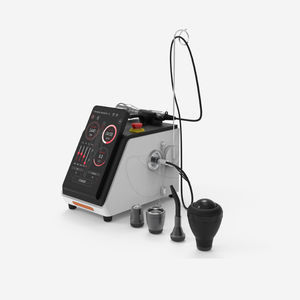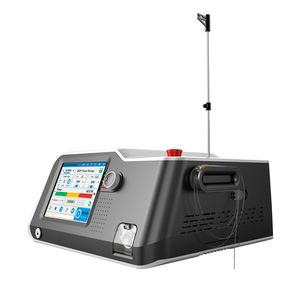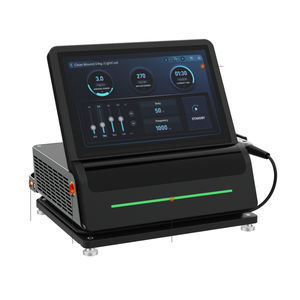
Veterinary surgery laser CHEESE PLUS VETveterinary biostimulationveterinary acupunctureveterinary dental surgery

Add to favorites
Compare this product
Characteristics
- Application
- veterinary biostimulation, veterinary surgery, veterinary dental surgery, veterinary acupuncture
- Type of laser
- diode
- Ergonomics
- tabletop
- Wavelenght
Min.: 450 nm
Max.: 980 nm
- Power
Min.: 1 W
Max.: 20 W
- Pulse duration
Min.: 25 µs
Max.: 10,000,000 µs
Description
The four wavelengths of 450nm, 650nm, 810nm, and 1064nm have different applications in dentistry. Here are the main uses of these wavelengths in dentistry:
450nm wavelength: The laser beam of this wavelength can be used for certain soft tissue surgeries, such as excision and incision. It can effectively reduce bleeding and tissue damage, thereby accelerating healing and reducing pain and discomfort for patients.
650nm wavelength: The laser beam of this wavelength can be used for biostimulation and pain treatment. It can promote healing and tissue regeneration, thus accelerating the recovery process. Additionally, it can alleviate inflammation and pain, making patients more comfortable.
810nm wavelength: The laser beam of this wavelength can be used for deep tissue surgery, such as root canal treatment and oral surgery. It can penetrate deep into the bone tissue and gums while minimizing damage and bleeding to surrounding tissues. It can also reduce surgery and recovery time.
1064nm wavelength: The laser beam of this wavelength can be used for deep tissue surgery, such as pulpitis treatment and bone tissue surgery. It can penetrate deep into the bone tissue and gums while reducing surgery and recovery time. It can also effectively alleviate inflammation and pain, and promote tissue healing.
THERAPY
The 650nm laser wavelength can promote cell metabolism, improve blood circulation, enhance immunity, and have a significant effect on improving chronic pain, enhancing athletic performance, and improving physical fitness. In rehabilitation therapy, it can be used to treat symptoms such as musculoskeletal pain, ligament and tendon injuries, spinal disorders, etc.
VIDEO
Catalogs
No catalogs are available for this product.
See all of GIGAALASER‘s catalogsExhibitions
Meet this supplier at the following exhibition(s):


*Prices are pre-tax. They exclude delivery charges and customs duties and do not include additional charges for installation or activation options. Prices are indicative only and may vary by country, with changes to the cost of raw materials and exchange rates.






